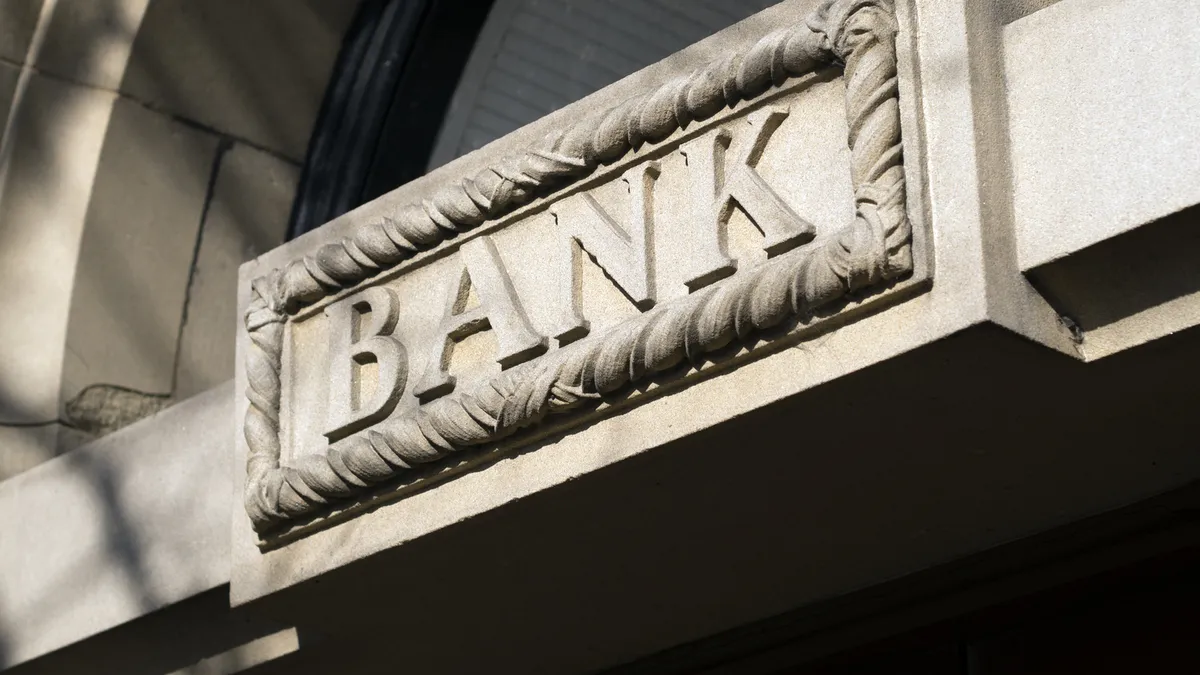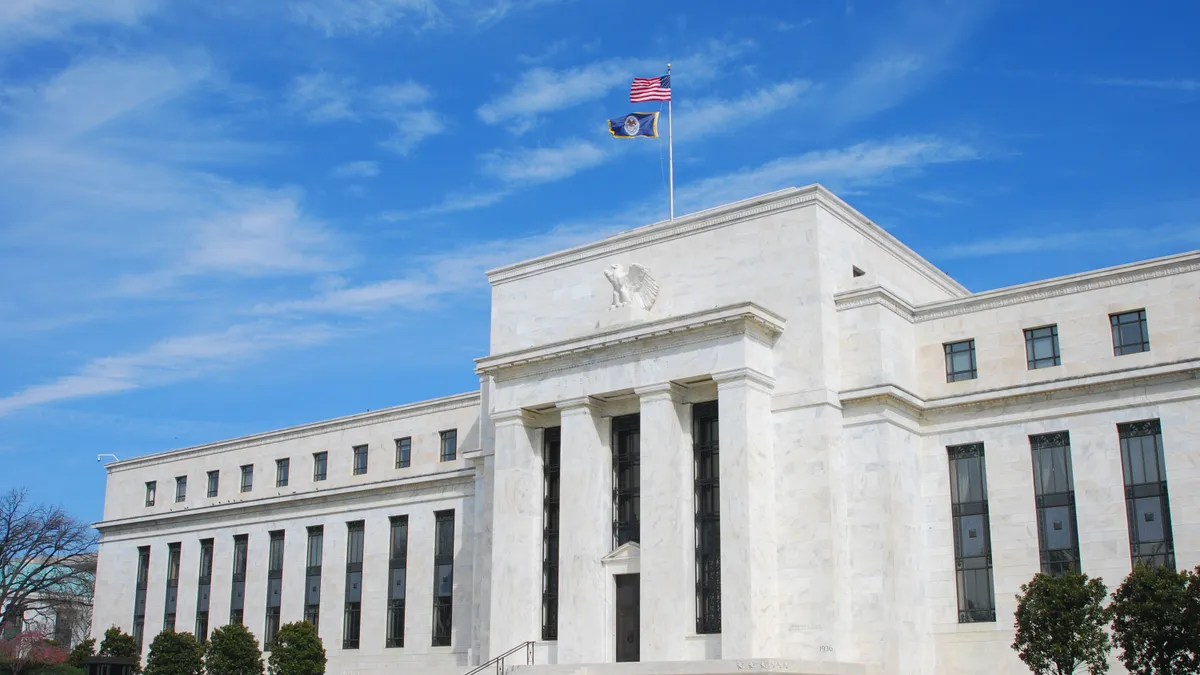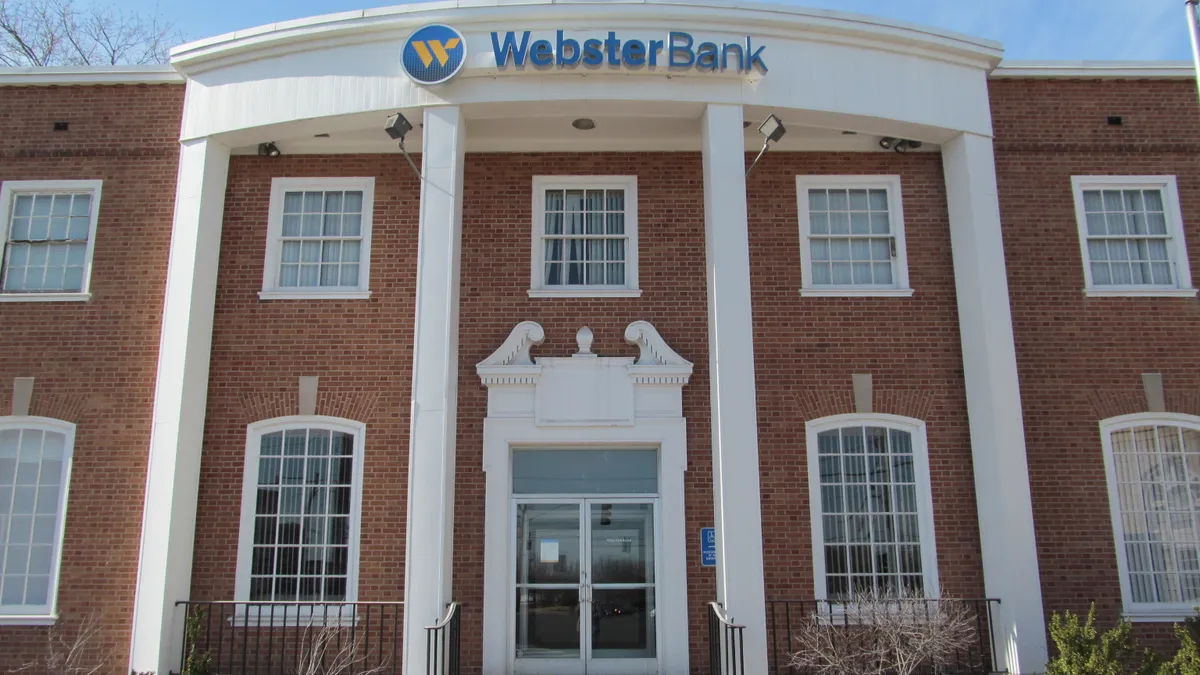2024 might be the year of wait-and-see. Can we expect a resurgence in the factors that spurred the failure of several high-profile banks last year? How will regulators respond to pushback against proposed increases in capital requirements? What is the Supreme Court’s final word on the funding structure of the Consumer Financial Protection Bureau? And how does the outcome of November’s presidential election affect the rollout of regulations from any of the agencies overseeing the banking space?
These are questions whose answers will take shape over the coming months. In this look at Banking Dive’s top five trends for 2024, you’ll find quandaries, conundrums, probabilities and more.
What are the odds for a repeat crisis?
The most immediate collateral damage from the collapses of Silvergate, Signature and Silicon Valley Bank last year was felt at regional banks — particularly those with high concentrations of deposits in the commercial sphere. While First Republic and PacWest did not emerge intact, the likes of Zions Bank and Western Alliance did.
For a further indicator that 2024 may yield a return to business-as-usual at Western Alliance, the Phoenix, Arizona-based bank last week hired its next chief credit officer, enabling her predecessor to make a long-delayed transition toward overseeing regional banking at the lender.
Among the major challenges for regional lenders recovering from 2023, the smaller banks — generally and in comparison to Wall Street behemoths — will have to pay more for deposits. Bank of America, for example, pays an average of 0.34% to consumer depositors, whereas Zions pays roughly 2.10% for deposits, according to Reuters.
Zions is also one of 11 regional banks — at least among lenders with less than $100 billion in assets — at which analysts predict lower earnings per share in 2024 than in 2023, according to LSEG.
Deposit outflows and higher rates led S&P to downgrade credit ratings for UMB and Comerica in August. KeyBank, Associated Bank and Valley National Bank also saw reduced credit ratings.
“The pressure that regional banks presumably faced as presented by industry observers did not materialize,” UMB told Reuters, regarding the downgrade. “Liquidity, regulatory capital levels, loan portfolio asset quality and funding sources remain strong across the sector, particularly at UMB.”
Not every regional was hurt as rates fluctuated. About 60% of loans at Huntington Bank, for example, are based on floating rates, which lets the Columbus, Ohio-based lender boost borrowing costs on auto loans and mortgages more quickly than some of its contemporaries.
But overall, it seems, larger banks came out of 2023 less affected.
“Size and scale in banking matter, and the regulatory and policy responses to the challenges we saw in the first half of the year dug an ever-deeper moat around the biggest banks,” Keith Noreika, a onetime acting comptroller of the currency, told Bloomberg.
Still, some of the onus of ensuring the 2023 crisis doesn’t repeat itself falls on regulators. For his part, Acting Comptroller of the Currency Michael Hsu told The Wall Street Journal his agency has “put a lot of attention on short-term liquidity to make sure banks [can] generate the cash necessary to survive faster bank runs.”
Hsu added he’s had internal discussions on how best to take action against banks that show persistent trouble spots, but that he wasn’t ready to address such a matter externally.
At least one analyst said the best way to offset uncertainty over liquidity is, indeed, to hold more cash.
“Banks are behaving in ways that imply that their lowest comfortable level of reserves is much higher than it was historically,” Mark Cabana, head of U.S. rates strategy at BofA Securities, told The Wall Street Journal.
That likely means lower profits. Net income at community banks, for example, dropped 20% in the third quarter, The Wall Street Journal reported.
Capital requirements
Keeping more cash on hand may come in handy for other reasons.
Implementing the Basel III endgame would increase capital requirements for the eight U.S.-based global systemically important banks by more than 30%, according to numbers crunched by the Financial Services Forum and others. That exceeds considerably the 19% and 24% by which U.S. regulators expect capital requirements and risk-weighted assets, respectively, to increase for G-SIBs.
JPMorgan Chase CEO Jamie Dimon, meanwhile, put the estimated capital requirements increase above 25% while addressing lawmakers late last year. He and others projected the increased cost of business for banks would trickle down to the American consumer in the form of more expensive mortgages and harder-to-access small-business loans.
Dimon and his contemporaries haven’t been shy to share their distaste for the proposed jump in capital requirements, and the Forum’s numbers — backed, too, by the American Bankers Association, Bank Policy Institute, and Securities Industry and Financial Markets Association — don’t make them sound any more appealing.
Deflating the angst among his peers, Morgan Stanley Chair James Gorman told Bloomberg this month that it’s “highly, highly, highly unlikely” that what’s been proposed is what will be ultimately regulated, calling it an “aggressive proposal that will be materially wound back” prior to its enactment.
Banks and the entities that police them have been on opposing sides of a hot debate around regulations that have been under development since the 2007-08 financial crisis. While regulators insist that the changes could help avoid a repeat of last year’s bank failures, bank CEOs beg to differ.
But at a December hearing on Capitol Hill, Senate Banking Committee Chair Sherrod Brown, D-OH, expected as much.
“You’re going to say that cracking down on Wall Street is going to hurt working families, you’re really going to claim that?” he said. “The economic devastation of 2008 is what hurt working families. The uncertainty and the turmoil from the failure of Silicon Valley Bank hurt working families.”
The transition period to comply with Basel III is set to begin July 1, 2025, with full compliance due July 1, 2028. That makes 2024 the year in which the regulations get ironed out.
The first step is evaluating comments that are arriving ahead of a deadline next week, both for changes to capital requirements and for a proposed long-term debt mandate for additional large banks.
CFPB in the balance
While the Federal Reserve, the Federal Deposit Insurance Corp. and the Office of the Comptroller of the Currency gird for pushback against proposed changes to capital and long-term debt holdings, the CFPB is in a holding pattern for virtually everything.
A Texas federal judge in October paused the bureau’s upcoming data collection rule that would force small-business lenders to take from borrowers sensitive information regarding race, gender and other demographic denominators.
Another federal judge, meanwhile, paused a CFPB lawsuit against MoneyLion that claims the fintech violated the Military Lending Act by imposing illegal and excessive charges.
Both judges are awaiting the Supreme Court’s ruling on the CFPB’s funding. Opponents say it’s unconstitutional that the agency receives its allowance from the Fed and not Congress.
In perhaps a surprise, even some dependably conservative Supreme Court justices showed skepticism toward the argument lodged by the case’s plaintiffs, a pair of payday-lending trade groups.
“I get your point that this is different, that it’s unique, that it’s odd,” Justice Clarence Thomas, a George H.W. Bush appointee, told attorney Noel Francisco in October. “But not having gone this far is not a constitutional problem.”
While it awaits word of its own fate, the CFPB has been anything but dormant. It joined the OCC last month in leveling a penalty against U.S. Bank for denying some of its customers access to COVID-era unemployment benefits distributed through the bank’s prepaid cards.
The CFPB in October also unveiled a long-awaited open banking proposal that aims to make it easier for consumers to share deposit account and credit card data with third parties like fintechs — though, like many of the CFPB’s efforts, that, too, has generated pushback from detractors.
The Supreme Court’s ruling is expected by July.
AI upgrades and launches
The launch of ChatGPT 14 months ago prompted a sea change in banks’ use of artificial intelligence. Morgan Stanley rolled out a chatbot powered by ChatGPT’s parent company OpenAI in September; and in November, JPMorgan Chase walked regulators through the controls on multiple AI applications, including one that can generate earnings summaries for companies the bank follows.
Neobanks Dave and Bunq launched their own chatbots, each supported at least in part by OpenAI. Dave CEO Jason Wilk told Banking Dive in December that DaveGPT has an 89% resolution rate.
While the new year will likely usher in more rollouts — TD, for one, is building its own large-language model, though an executive didn’t specify a timeline — 2024 will also bring in upgrades to existing platforms.
“We expect to see an increase in fine-tuned LLMs designed specifically for the banking industry and its unique vocabulary and context — enabling the model to better understand and respond to prompts and queries related to a particular topic or domain like regulatory changes or financial reporting standards,” said Zac Maufe, global head of regulated industries at Google Cloud.
Sources told On The Money in September that such upgrades were needed for Morgan Stanley’s chatbot. Meanwhile, a December report from The Information indicated that some of its target users opt to call a person instead.
TD is training its LLM on data it knows is not copyrighted “so we can be more comfortable with the use of it,” said Rejeesh Ramachandran, the bank’s head of strategic business architecture and customer insights. “Right now, out in the wild, when somebody goes to ChatGPT and asks it to write some code, they have no idea whose code it’s stolen from. And we, as a bank or as anybody who is conscious, should not be using somebody else’s stuff.”
BaaS outpaces its growing pains
In 2023, the banking-as-a-service industry experienced growing pains as regulators made efforts to get a handle on the size and scale of lenders’ partnerships with fintechs.
Several BaaS banks received enforcement actions over such ties, signaling that regulators are taking a closer look at how banks could expose themselves to risk as they further intertwine their services with fintech partners.
Recognizing the need for clarity and guardrails in the fast-growing space, regulators in June released interagency guidance aimed at creating a framework to help banks navigate their relationships with third parties.
That guidance, however, hasn’t been embraced by all industry stakeholders. Former FDIC Chair Jelena McWilliams said at a D.C. event in November that the text doesn’t go far enough to outline parameters and provide clarity to banks, which could hamper future growth in the BaaS space.
“I think the message is clear. I don’t think that the current set of regulators really want banking-as-a-service and third-party partnerships to blossom,” said McWilliams, who expressed a fear that the guidance could have a chilling effect on bank-fintech partnerships.
But Cross River Bank, a major BaaS player that was handed an enforcement action in April, appears optimistic about the future of bank-fintech partnerships in 2024.
“2024 should be a bonanza for most [BaaS providers],” Cross River CEO Gilles Gade said at the Money20/20 conference in Las Vegas in October. “For the folks that are in the business of banking-as-a-service, where they’re a conduit, making software dollars through a SaaS model by selling their software, or the folks in regulatory compliance, these are really bright years to come."
Immad Akhund, co-founder and CEO of Mercury, a neobank whose business model relies on partnering with BaaS banks, is also optimistic that more lenders will be eager to jump into the space, despite 2023’s hurdles.
“While 2023 was a challenging year for BaaS, I’m bullish that BaaS-native banks are the future of this space and more sponsor banks are coming,” he said. “The banking crisis shined a light on the pressure non-[global systemically important banks] are under to survive, and working with fintechs could be the answer for some of them.”
Akhund said he expected another 100 banks would be willing to work with fintechs in the next three years, which could enable another 500 fintechs.
“It will be fragmented and less concentrated than it is today, which is a net-good for the ecosystem,” he said.





















